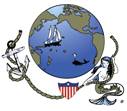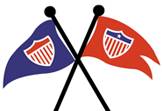3G Modems
What are 3G Modems? Practically, speaking, they allow you to get
broadband internet access anywhere you can get a cell-phone signal!
This, of course, is virtually anywhere on land these days and even out to sea
about 15 miles or so (and further with special antennas). For the
purposes of this article, we refer to "3G" in the generic to refer to
this type of technology, even though 4G & higher speeds are now becoming
available. OK, it doesn't let you update your webpage from the middle
of the Atlantic Ocean, but it's still pretty cool. How often are you in
the middle of an ocean? Historically, we're on passage about 7% of the
days we're on board. We generally have a cell signal the other
93% of the time.
GSM is the cell-phone technology that's currently used all over the world. Most countries
have a GSM network, even remote ones like
Afghan Wireless,
Nepal Telecom, Celcom (Malaysia), AIS (Thailand) & Telkom Kenya.
It's not as popular in the USA but it's growing even there (although the US
uses slightly different frequencies for its version of GSM, so a GSM phone or modem from
the US may not work in other countries unless it's a special tri- or quad-band
unit). 3G is a technology that piggy-backs on the GSM cell signals,
providing broadband internet access wherever cell signals are available.
Many GSM phones these days have 3G modems built into them, and many allow "tethering" so your
computer can get internet access using the phone's data signal.
We first heard of this technology when we were in Brisbane in 2006.
Summer in Brisbane is a time of intense thunderstorms, which sailboats don't
like at all. Even a nearby lightning strike can destroy many of the
sensitive electronics that we carry on board (we lost over $4,000 from a near miss). But the Brisbane airport radar
can see these thunderstorms and publishes graphics of them on the internet every minute or
so. They'll
even show their tracks over the last several minutes, so us cruisers can see if
the storms are headed towards us or away. Pretty cool.
But we didn't actually buy a 3G modem until we got to South Africa, paying
R1,700 (about $240) for a unit that (we later found) was locked to the Vodacom
system. Still, Vodacom and its affiliates cover much of the world.
And prices now (late 2011) are only about $30 for an unlocked 3G modem here in
Malaysia (and even better if you can catch a promotion).
Connect time is expensive in South Africa, so we had to pay an additional $45
for 2 gigabytes (GB) of data, which lasted us about 2 months if we were careful (but now
connect time is much cheaper).
In Malaysia, Celcom (which is affiliated with Vodacom) charges about $6/week for 2GB of data, and in the
Seychelles, the service is provided for free (or perhaps they hadn't worked out
a way to charge for it yet).
Physically, a 3G modem looks a bit like an external WiFi unit - about the size
of 1-2 fingers, with a USB tail to plug into the computer. Most units have
a light that changes color to indicate your connection speed. To the
computer, most units
look like a flash-memory ("nerd") stick, and most carry all
their software in that flash memory, requiring no additional installation
software and providing a complicated but plug-&-play software installation.
Even in Africa, our modem provided us with excellent service. We could
be in a rest-camp in Kruger Park, outside our primitive safari-tent, and still
be online, while the hyena on the other side of the fence contemplated us,
wondering what we'd taste like. Friends of ours were sailing down the coast
of South Africa in thick fog, wanting to come into Knysna but afraid to approach
the coast and the narrow "Knysna Heads" entrance in the fog. But they were
only 5 miles offshore and they had a cell signal, so they checked into
http://www.TheHeads.co.za.
That site has 2 webcams pointed at the Knysna entrance. No fog, and no
swells! So our friends turned towards shore, soon sailed out of the fog,
and made a successful landfall at Knysna.
GSM works on 2 frequencies, one usually close to 2 GHz and the other about
half that. Like any other radio, a 3G modem will work better if it has a
reasonably unobstructed view of a cell tower, and if the antennas are oriented
in the same direction. We tend to hang ours up with a string to a hatch or
something. Cruisers with metal boats may want to invest in a USB extension
cord so they can hang their 3G modem outside their boat, where the metal hull
won't obstruct the signal.
For cruisers in Thailand, Thailand is now (2012) rolling out 3G in selected areas, but we
found that our Malaysian modem would only get the old EDGE (2.5G) speeds. We needed a new
modem to get the new 3G speeds. For about $30/month you could get a plan for more or less
unlimited data.
For cruisers in South Africa (and some other countries) there are some tricks to
getting the most out of your 3G modem. First, you don't want to use normal airtime for
your data - you'll go through it in no time at all. Instead, convert
all of the airtime on your modem into "data‑bundles". Since
the Vodacom system is designed to start using airtime as soon as you run out of
data‑bundles, you generally don't want to have any normal airtime on your modem, just
data‑bundles. When we were there in 2008 and 2009, data‑bundles cost R189,
R289, or R389 ($27, $41, & $55) for 500MB, 1GB, or 2GB respectively. Obviously, buying 2GB
is the best deal, but it only lasted until the end of the next month, so you had
to gauge how much you'd use. Unfortunately, you
can't buy airtime in those amounts! So the trick is to buy somewhat more
than that amount of airtime, put it on your normal cell‑phone, and then transfer
over the exact amount you need to your modem by dialing *111# (send) and
following the prompts for airtime transfer. The call is free, but remember
to hit your "Select" button before typing the number of your response, or you'll
have to start all over again.
Then you'll have to remove the SIM from your phone and put in your modem's
SIM. You should get a message that you've been topped up by the amount
that you just transferred. Then dial *111# (send) again to convert
your transferred airtime into data‑bundles right away. When you're finished,
including both confirmation steps, remove your data SIM, put it
back in your modem, and replace your phone's normal SIM. You'll have to
repeat this whole procedure every month or 2 when your data-bundles run out. Strangely enough,
the software did not allow us to add more data‑bundles until all
of our existing data‑bundles had expired or been used up. This means that
you have to be in the middle of a data download and have it fail before you can
top up, a truly stupid way to work things. But as they say,
TIA (This Is Africa...)
Equipment Pages:
Up | Chart Downloads | Making mbTiles | KAP Files | OpenCPN | Turnbuckles | LEDs | Anchors | Sail Drives | Epoxy Work | AIS | Solar Panels | Watermakers | 3G Modems
Cruising Info:
General Cruising Info | Equipment | Pacific Ocean Cruising | Indian Ocean Cruising | Provisioning Food & Fuel | Cruising Recipes
Top Level:
Home |
Destinations |
Cruising Info |
Underwater |
Boat Guests |
Ocelot |
Sue |
Jon |
Amanda |
Chris |
Site Map |
Make a Comment
 |
Lifetime
Commodores
of the
Seven Seas
Cruising
Association |
 |
|
If our information is useful,
you can help by making a donation
|
Copyright © 2000‑ Contact:
Jon and Sue Hacking -- HackingFamily.com, svOcelot.com.
All rights reserved.

